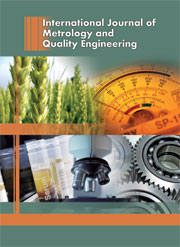Article contents
Performance study of dimensionality reduction methods formetrology of nonrigid mechanical parts
Published online by Cambridge University Press: 06 March 2014
Abstract
The geometric measurement of parts using a coordinate measuring machine (CMM) has beengenerally adapted to the advanced automotive and aerospace industries. However, for thegeometric inspection of deformable free-form parts, special inspection fixtures, incombination with CMM’s and/or optical data acquisition devices (scanners), are used. As aresult, the geometric inspection of flexible parts is a consuming process in terms of timeand money. The general procedure to eliminate the use of inspection fixtures based ondistance preserving nonlinear dimensionality reduction (NLDR) technique was developed inour previous works. We sought out geometric properties that are invariant to inelasticdeformations. In this paper we will only present a systematic comparison of somewell-known dimensionality reduction techniques in order to evaluate their accuracy andpotential for non-rigid metrology. We will demonstrate that even though these techniquesmay provide acceptable results through artificial data on certain fields like patternrecognition and machine learning, this performance cannot be extended to all realengineering metrology problems where high accuracy is needed.
- Type
- Research Article
- Information
- International Journal of Metrology and Quality Engineering , Volume 4 , Issue 3 , 2013 , pp. 193 - 200
- Copyright
- © EDP Sciences 2014
References
- 3
- Cited by


